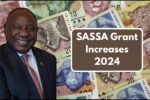CRA Tax Refund for Canadians in 2025: Canadians eagerly awaiting their CRA tax refund in 2025 will be happy to know that the Canada Revenue Agency (CRA) has streamlined the process, making it easier to file and get your money back. Whether you are a student, employee, retiree, or self-employed individual, understanding how to claim your refund can help you maximize your return and put more money in your pocket.
What is a CRA Tax Refund?
A CRA tax refund is the amount of money you receive back from the government when you have paid more in taxes than you owe. Overpayments may result from payroll deductions, tax credits, or eligible deductions claimed on your tax return.
For example, if you earned $50,000 in 2024 and paid $7,500 in income tax but were eligible for deductions that lowered your tax liability to $6,000, you would receive a $1,500 refund.
Who is Eligible for a CRA Tax Refund in 2025?
Eligibility for a tax refund depends on several factors:
- Overpaid Taxes: If more tax was deducted from your paycheck than necessary.
- Tax Credits: Refundable credits like the GST/HST Credit, Canada Workers Benefit (CWB), and Climate Action Incentive Payment (CAIP) can increase your refund.
- Tax-Deductible Contributions: Contributions to an RRSP (Registered Retirement Savings Plan) can lower your taxable income and boost your refund.
- Non-Refundable Credits: These include the Disability Tax Credit (DTC), Canada Caregiver Credit, and Tuition and Education Credits.
Even if you had little or no income in 2024, filing a tax return ensures eligibility for government benefits like the Canada Child Benefit (CCB), Guaranteed Income Supplement (GIS), and GST/HST Credit.
How to Claim Your CRA Tax Refund in 2025
Step 1: Gather Your Tax Documents
To ensure a smooth filing process, collect the necessary documents, including:
- T4 slips (employment income)
- T5 slips (investment income)
- RRSP contribution receipts
- Tuition receipts (T2202)
- Rent receipts (for tax credits in certain provinces)
- Medical expenses, childcare expenses, and charitable donations receipts
Step 2: Choose a Filing Method
You can file your tax return using one of the following methods:
Online Filing (Fastest & Recommended)
- Use NETFILE-certified tax software like TurboTax, Wealthsimple Tax, or H&R Block.
- Log in to CRA My Account to auto-fill some sections and reduce errors.
Paper Filing
- Download the 2024 General Income Tax Package from the CRA website.
- Print, complete, and mail the tax forms to the CRA.
Hire a Tax Professional
- If you have self-employment income, foreign assets, or rental properties, consider hiring a tax expert.
Step 3: File Before the Deadline
Deadlines are critical to avoid penalties and delays:
- April 30, 2025: Filing deadline for most Canadians.
- June 15, 2025: Filing deadline for self-employed individuals (but payment due by April 30).
Step 4: Receive Your Refund
- Online filers with direct deposit: Refunds processed within 2 weeks.
- Paper filers: Refunds processed within 6 to 8 weeks.
- Check your refund status via CRA My Account or call 1-800-959-1956.
Common Reasons for Tax Refund Delays
If your refund is taking longer than expected, these could be the reasons:
- Errors in SIN (Social Insurance Number) or address.
- Incorrect or outdated direct deposit information.
- Paper filing during peak season.
- Missing documents or manual review by CRA.
To avoid delays, file online, double-check your details, and set up direct deposit before filing.
How Much Can You Expect to Receive?
Refund amounts vary depending on your income and eligible deductions. Here are some estimates:
| Scenario | Estimated Refund |
|---|---|
| Student with tuition credits | $1,200 |
| Family with 2 children & childcare expenses | $3,000+ |
| Senior with pension income and age credits | $800 – $1,500 |
| Self-employed writer with business deductions | $2,500+ |
Tips to Maximize Your Tax Refund
- Contribute to RRSP before the March 1, 2025 deadline.
- Claim eligible medical expenses for any 12-month period ending in 2024.
- Deduct moving expenses if you relocated for work or school.
- Claim childcare costs if both parents work or study.
- Use tuition carry-forward credits if you didn’t need them last year.
- Deduct work-from-home expenses if applicable.
Every eligible credit or deduction you miss means leaving money on the table. Use digital tools like Expensify to track receipts.
FAQs
What if I Made a Mistake on My Tax Return?
You can fix errors using the CRA ReFILE service (available through most tax software) or by submitting a T1 Adjustment Request.
Can I Get a Refund If I Had Low or No Income?
Yes! You may still qualify for refundable tax credits like:
- GST/HST Credit
- Canada Workers Benefit (CWB)
- Climate Action Incentive Payment (CAIP)
How Do I Set Up Direct Deposit for My Refund?
- Log in to CRA My Account.
- Click Direct Deposit under your profile.
- Enter your bank details (institution number, transit number, and account number).
Is It Better to File Early?
Yes! Filing early ensures a faster refund, allows time to correct any errors, and avoids last-minute stress.
I’m Self-Employed. Can I Still Get a Refund?
Yes! If business expenses reduce your taxable income significantly or you qualify for refundable tax credits, you may receive a refund.
Final Thoughts
Claiming your CRA tax refund for 2025 doesn’t have to be complicated. By filing early, ensuring accuracy, and maximizing deductions, you can get the most out of your return. Take advantage of all eligible credits, set up direct deposit, and stay organized for a hassle-free tax season.













